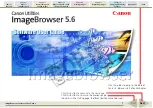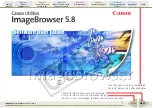
SNMP Introduction
©2008 Allied Telesis Inc. All rights reserved.
54.6
AlliedWare Plus
TM
Operating System Software Reference C613-50003-00 REV E
Software Version 5.2.1
Instances
Objects are just templates for data types. An actual value that can be manipulated by an NMS
is an instance of an object. An instance is named by appending an instance identifier to the end
of the object’s object identifier. The instance identifier depends on the object’s data type:
■
If the object is not a column in a table, the instance identifier is 0 (zero). For example, the
instance of the sysDescr object is:
sysDescr.0
or1.3.6.1.2.1.1.1.0
■
If the object is a column in a table, the method used to assign an instance identifier varies.
Typically, the value of the index column or columns is used.
The object ifTable in MIB-II contains information about interfaces and is indexed by the
interface number, ifIndex. The instance of the ifDescr object for the first interface is:
ifDescr.1
or 1.3.6.1.2.1.2.2.1.2.1
If the index column is an IP address, the entire IP address is used as the instance identifier. The
object ipRouteTable in MIB-II contains information about IP routes and is indexed by the
destination address, ipRouteDest. The instance of the ipRouteNextHop object for the route
131.203.9.0 is:
ipRouteNextHop.131.203.9.0
or 1.3.6.1.2.1.4.21.1.7.131.203.9.0
If the table has more than one index, the values of all the index columns are combined to form
the instance identifier. The object tcpConnTable in MIB-II contains information about existing
TCP connections and is indexed by the local IP address (tcpConnLocalAddress), the local port
number (tcpConnLocalPort), the remote IP address (tcpConnRemAddress) and the remote
port number (tcpConnRemPort) of the TCP connection. The instance of the tcpConnState
object for the connection between 131.203.8.36,23 and 131.203.9.197,1066 is:
tcpConnState.131.203.8.36.23.131.203.9.197.1066
or 1.3.6.1.2.1.6.13.1.1.131.203.8.36.23.131.203.9.197.1066
Syntax
The syntax of an object describes the abstract data structure corresponding to that object type.
For example, INTEGER or OCTET STRING.
Access
The access mode of an object describes the level of access for the object.
Access modes for MIB objects:
Access
Description
Read-only
The object’s value can be read but not set.
Read-write
The object’s value can be read and set.
Write-only
The object’s value can be set but not read.
Not-accessible
The object’s value cannot be read or set.
















































